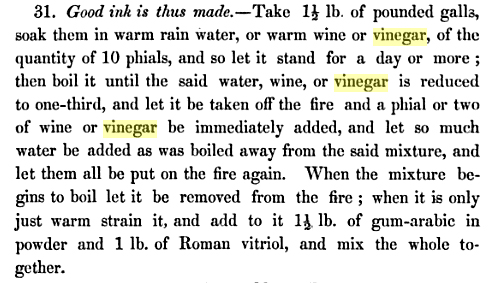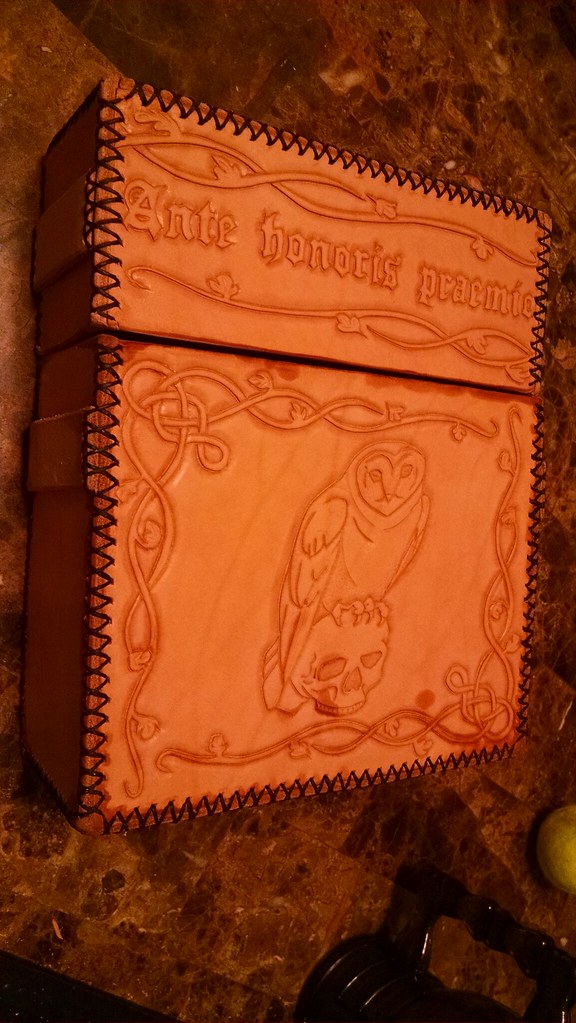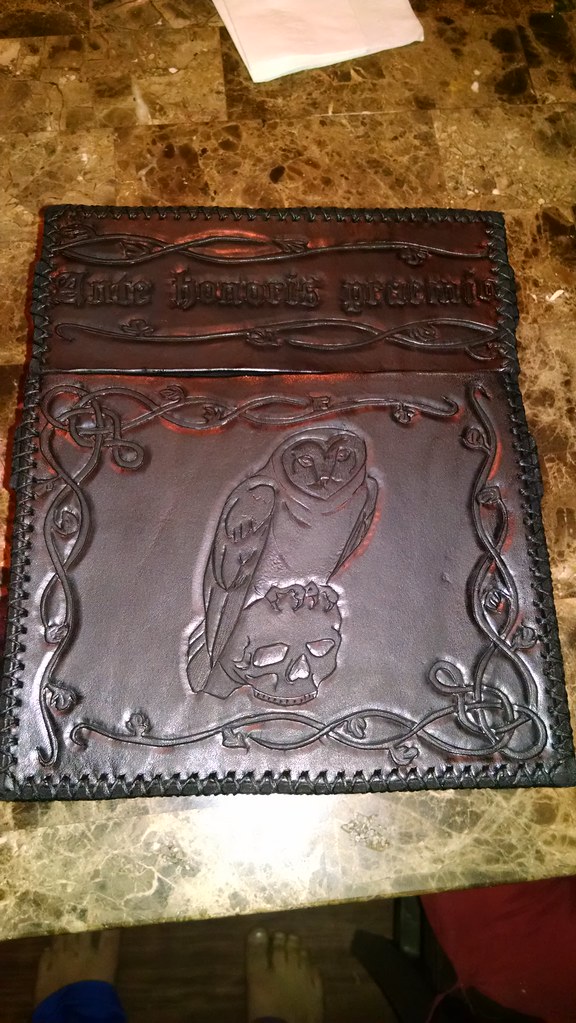Original Treatises on the Arts of Painting1 contains a formula for creating black ink that I found very interesting and is relevant to the creation of the formula that I used. A screen capture is below, but the actual text is also available for online reading on Google Books.

Now, according to Encyclopedia Britanica2, vitriol itself is a reference to sulfuric acid, but “roman vitriol” in particular is a reference to cupric (copper) sulfate. This would make a green patina that’s still used today, but in my case, I was interested in the ferrous (iron) sulfate properties in a similar manner in order to make what I’ve found to be called “vinegaroon” in modern leather use.
First Attempt
The process behind making the solution is very simple. In the notes above, you’ll see references being made of soaking pounded galls in water, wine or vinegar. This process is used to actually pull the tannins out of the galls, more or less the same stuff that’s used for tanning leather in the case of vegetable tanned hides. Now, the interesting part to me was that they had actually figured out they could pull color from tossing in the metal sulfates into the mix.
For the actual creation of the mixture, you simply take a container (glass is preferable) and put some vinegar into it. Then you directly place iron into the vinegar. In my case I used steel wool that I de-oiled. Place the lid on the container and give it a good shake and you will start to see some rather rapid bubbling begin to occur. Speaking from experience, you should loosen the lid to the container so that air can escape (I didn’t initially, the lid of the jar made a rather loud pop a day of setting). The iron content will begin to rust, turning the vinegar reddish brown. I let my jar sit out on the porch in relatively warm weather for about 2 weeks and it gave about the same color as a strongly steeped tea. I pulled out the steel and strained off the excess rust pieces and put the resulting vinegar solution in a fresh jar.
Now for the cool part. I’ve seen other folks posting that they let their leather sit in the mixture for a couple of days or weeks, so I did not expect immediate results. That is, however, exactly what I got. I did single immersions without having wetted the leather prior to dunking it and it almost immediately turned black with the solution at full strength. Subsequent immersion tests with dry leather, but thinning the mixture, gave the same richness in color. The only difference in outcome was the actual time that the solution had to sit on the leather in order for it to gain the color itself. In a counter-clockwise manner, we go from full strength (top center) to one half, one quarter and finally one eighth. The top right image is after neutralizing the solution with the baking soda and water.
The coolest thing about this process is that this is actually not a dye at all. The solution itself reacts to the tannins in the veg tanned leather to turn it black!
By and large, this is the easiest process that I’ve played with, and it’s also yielded the most interesting result. A side by side comparison between the vinegar black and “USMC Black” oil dye that’s available in stores is nearly indistinguishable, except that the cut cross section after a single application with the vinegar black shows that it’s moved all the way through the leather instead of only treating the surface.
I’ve put a video here of my first test on an actual project so that you can see how the leather changes color.


- Original Treatises on the Arts of Painting by Mary Merrifield.
Contains several references to pigments from the 15th century manuscripts of Jehan le Beague. The screen capture above is in reference to page 60 of the Manuscripts of Jehan le Gegue. To read online in Google Books, click here. - Encyclopedia Britanica, entry about what vitriol is.